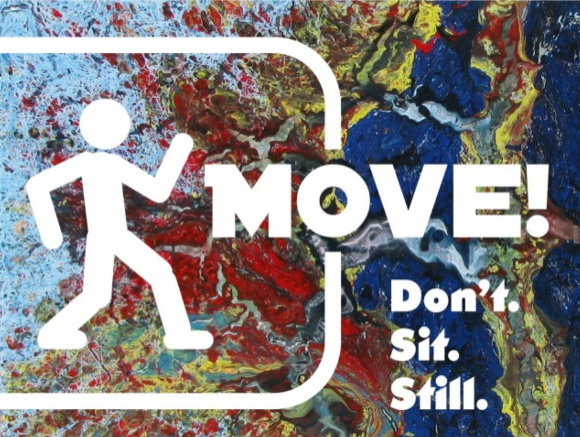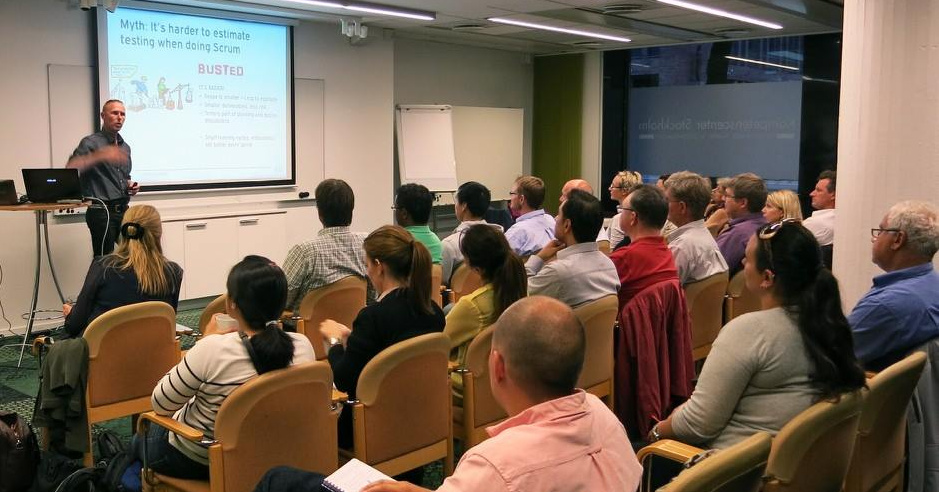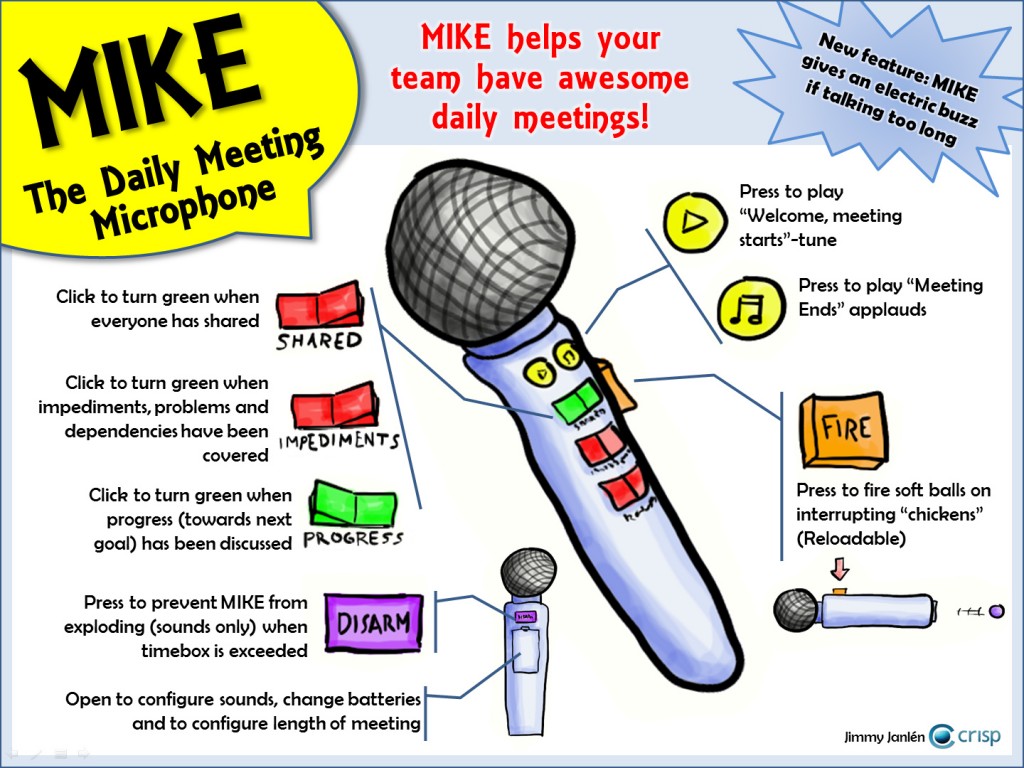“Rörelse trumfar stillasittande” är den första och viktigaste av de sex principerna för lärande från Sharon Bowmans bok “Using Brain Science to Make Training Stick”. Att bli certifierad Training From the back of the Room lärare var en resa med många steg och moment. En av uppgifterna bestod av att göra en presentation. Jag valde
Continue readingJimmy Janlén
Role Expectation Mapping
Role Expectation Mapping is a series of workshop that explores, clarifies and establishes which expectations members of a group, team or project have on each other.
If you suspect that collaboration is undermined because of mismatch of expectations between people, then this exercise could boost the team’s ability to collaborate efficiently together. It is also a powerful way to jump start a new team and give them a structure to relate to.

People always have certain expectations on each other, behaviors, responsibilities, etc., but if those aren’t made clear and agreed upon among everyone – you are bound to have unconstructive conflicts, colliding agendas, difficulties in collaboration and things that fall between chairs.
Team barometer (self-evaluation tool)
Sometimes it’s hard for a team to know if they get tighter and better as a team over time. This is a tool that allows a team to learn just that.
Team barometer (self-evaluation tool) in a nutshell
The barometer is executed as a survey in a workshop. The survey consists of 16 team characteristics, packaged as a deck of cards. Team members vote green, yellow or red for each card in the meeting (or before the meeting as an anonymous survey). Once all cards have been run through, the team reflects and discusses the results. You can, if you want to, run through the exercise in thirty minutes, but I recommend to set aside an hour.
Some examples of Sprint Burndowns
In this episode of our YouTube channel Crisp Agile Academy I talk about Sprint Burndowns. I discuss the value of having one and that it is a tool for the team, not anyone else. I also give examples of different kind of burndowns: Remaining Hours, Remaining Story Points, Remaining Tasks, Things in progress, and Confidence level. I wrap up the episode with a little quiz.
http://www.youtube.com/watch?v=qoMZoppaf0U
Crisp Agile Academy – Definition of DONE
In this episode of our YouTube channel “Crisp Agile Academy” a brief introduction is given to Definition of DONE. What is it? What is it good for?
Continue readingSeminar “Will automation kill the tester?”
Last Thursday I gave a two hour talk on Agile Testing, “Will automation kill the tester?”, for Dataföreningens network for test and requirements in Stockholm. I talked about testing in agile contexts, the agile tester, busted (and approved) some myths on agile testing, and gave examples – lots of them. How different companies, project and
Continue readingSlides from DARE 2013 – “Scaling Agile @ Spotify”
Two weeks ago I attended a conference in Belgium, DARE. The conference was really great. I met so many fun people and carried with me so many thoughts and learnings back home. I held a keynote, “Scaling Agile @ Spotify”, talking about how Spotify staying agile, lean and fast, while growing. I also talked about how
Continue readingMIKE – The Daily Meeting Microphone
This is MIKE, The Daily Meeting Microphone. MIKE is a concept. An idea. Captured on a poster. If you like it; Click the image below (or click here to download the powerpoint). Print it on A3 format. Put it on the wall next to your team wall or in the office corridor. Done 🙂 If
Continue readingImprovement Theme – Simple and practical Toyota Kata
Improvement Theme is a tool in the form of a poster that works as a conveyor belt for continuous improvements once the Retrospective is over.
I’ve been reading a little bit about Toyota Kata and seen great presentations on the concept. In order to make it practical and useful for me I found myself tweaking it and packaging it in a concept I’ve come to call Improvement Theme. I’ve tried this concept a couple of times now and found it to be a good tool to extend improvements beyond the Retrospective and bringing it into the daily work. In this article I describe how to create the poster and how to use it as a tool for continuous improvements.
The Improvement Theme is a poster. I’ve been using magic charts since they are easily moved between the room in which the retrospective is held and the teams wall.
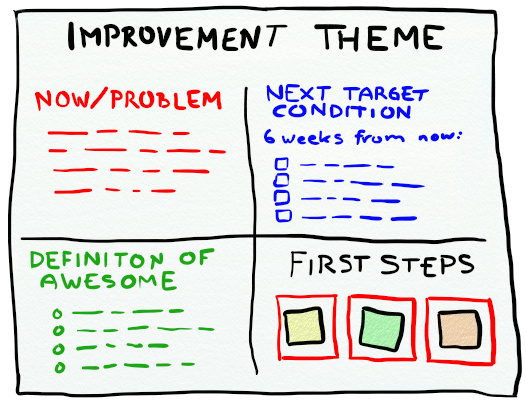 The charter consists of five areas.
The charter consists of five areas.
1. Name of the Improvement Theme
2. Now/Problem – Description of the current situation
3. Definition of Awesome – How would we like it to be?
4. Next Target Condition – X weeks from now, what has changed?
5. First Steps – 3 slots for three post-its that describe the first (next) actions we will take?
It’s a living document, preferable put up next to the scrum/kanban wall. Once or twice a week the team reviews the theme and agrees upon new actions as they get completed.
When X weeks has passed the team does a review of the theme itself. If they want to continue on the same theme they identify a new “Next target condition”. Otherwise they create a new Improvement Theme poster.
Here follows an extensive description of how I’ve been using the concept as a tool for improvement and a more in-depth description of the different aspects of the poster.
Ignite great team discussions with “Jimmy Cards”
 Would you like to try out a tool that has the power to ignite exciting discussions that challenges the team and that possibly inspires to new improvement actions? Then you should try out the “Jimmy Cards”.
Would you like to try out a tool that has the power to ignite exciting discussions that challenges the team and that possibly inspires to new improvement actions? Then you should try out the “Jimmy Cards”.
So, what is “Jimmy Cards”? Simply put it, it’s a deck of challenging questions and riddles for the agile team.
Continue reading
Round Table Agile Transformations @ Crisp
Crisp has the luxury of working with small, medium, big and very big companies. We help through providing education. We coach and mentor projects, teams and organizations adopt and master the agile way of working. Last week we at Crisp invited a couple of our clients to participate in a round table discussion regarding agile transformations. The unifying theme were the challenges surrounding large scale agile implementations.

We at Crisp offered a platform and forum to share and learn in a neutral and safe environment. Four companies attended. One to four participants from each company. The participants were directly involved, and in one way or the other, responsible for the agile transformation taking place in their respective company. The size of the department or company involved in the change varied from 300 – 1500 people.
What questions does your Working Agreement answer?
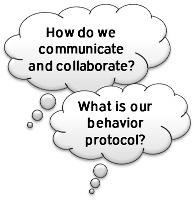 All teams have some sense of what is regarded as acceptable or good behavior within the team. Most people know that colleagues don’t appreciate it when you’re late. Perhaps you have a silent agreement regarding how you vote and make decisions. Some teams write down their behavior and collaborative “protocol” in a Working Agreement.
All teams have some sense of what is regarded as acceptable or good behavior within the team. Most people know that colleagues don’t appreciate it when you’re late. Perhaps you have a silent agreement regarding how you vote and make decisions. Some teams write down their behavior and collaborative “protocol” in a Working Agreement.
You might think that common sense covers it and writing it down seems silly, but surprise – common sense is subjective and you will have different opinions about things. Great! Let’s discuss and find our common ground.
The act of discussing it and writing it down is also a strong team building activity and forges relationships between team members. Any new team, or any team for that matter, could benefit greatly from a one-hour workshop. It could be part of a retrospective or a stand-alone meeting.
